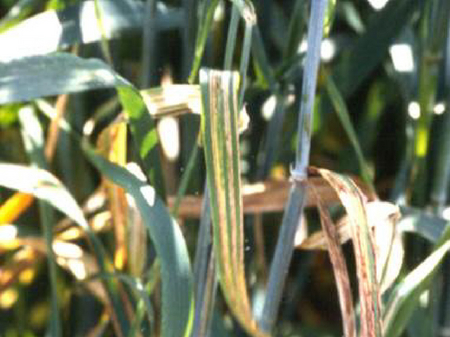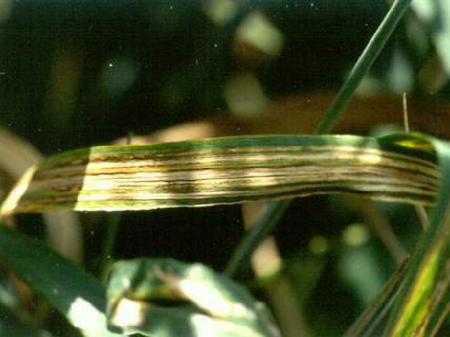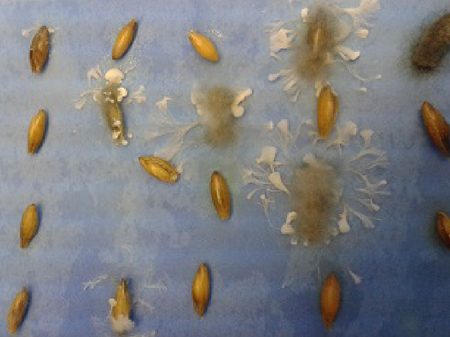Leaf stripe of oat
Pyrenophora avenae
Profile
The stripe disease of oats is caused by the fungus Pyrenophora avenae. The infestation results in striation of the leaves, reduced growth of the plant and only sporadic ear formation. It occurs mainly under humid weather conditions and can lead to considerable yield losses due to its rapid spread potential.
Damage symptoms
The fungus causes grayish brown to reddish brown streaks extending from the leaf base to the leaf tip. With increasing maturity, the leaves tear open at the stripes. Plants grow stunted and sporadic spike formation occurs, although these are usually numb and do not contain oat grains. Stripe disease of oats is easily recognizable from the time of shooting, or better, from the time of ear pushing.



Prevention and control
- The use of tested and healthy seeds is recommended
- Special dressing as a fungicide measure (see list of plant protection products approved in Austria).
Last updated: 10.04.2025
automatically translated